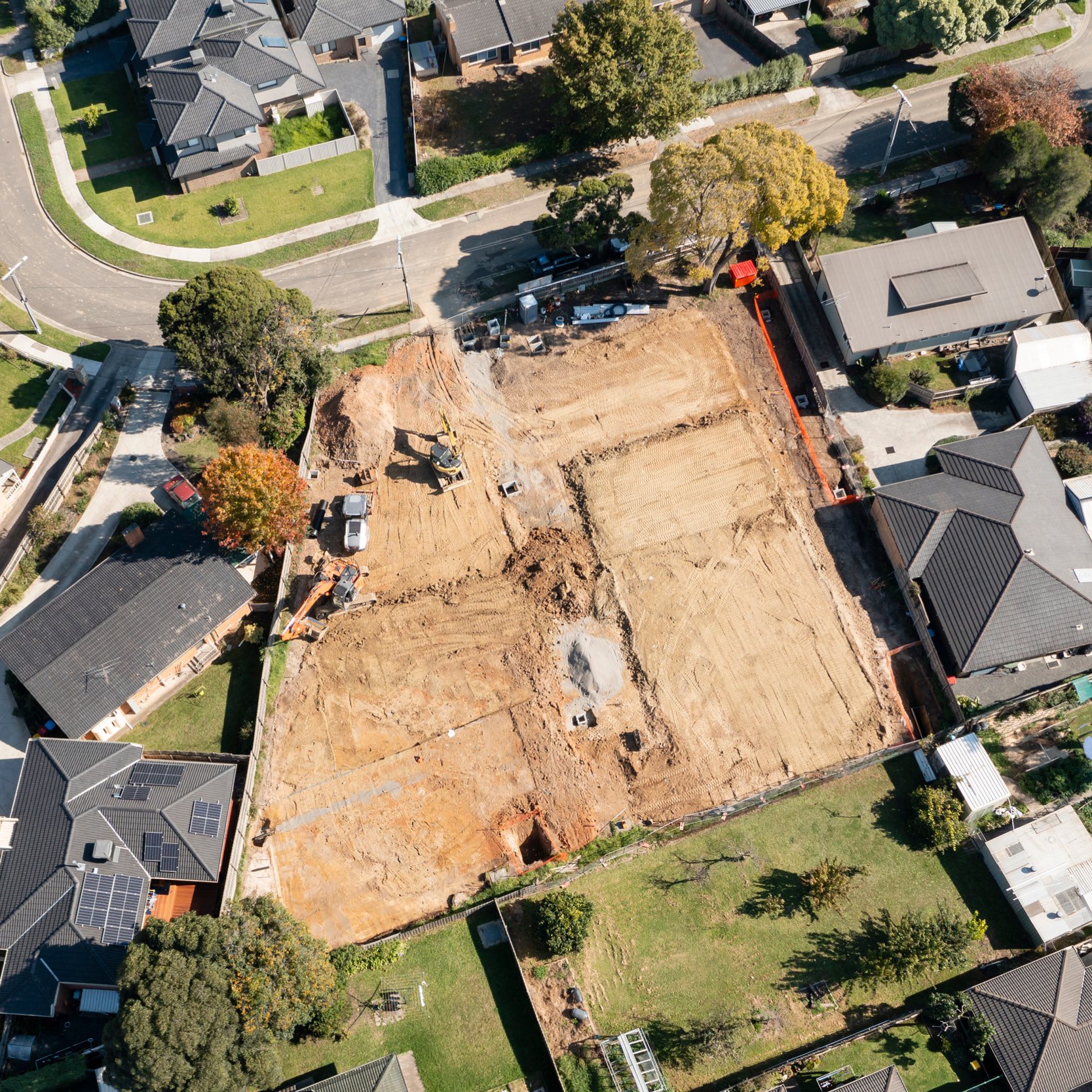Proposed development on the nose: The Planning and Environment Court of Queensland has dismissed an appeal against the refusal of a development application for a residential community and commercial services in a flood plain and adjacent to a sewerage treatment plant
By Nadia Czachor and Matt Richards
Palmer v Council of the City of Gold Coast [2023] QPEC 47 concerned an appeal against the decision of the Council of the City of the Gold Coast to refuse a development application for land situated at Merrimac, on the Gold Coast.
In brief
The case of Palmer v Council of the City of Gold Coast [2023] QPEC 47 concerned an appeal by Mr Clive Palmer (Applicant) to the Planning and Environment Court of Queensland (Court) against the decision of the Council of the City of the Gold Coast (Council) to refuse a development application for a preliminary approval for a material change of use and a variation request (Application) in respect of land situated at Merrimac, on the Gold Coast (Land).
In deciding to dismiss the appeal, the Court considered the following issues (at [32]):
-
Land use.
-
Built form, density and character and visual amenity.
-
Transport and traffic planning.
-
Odour.
-
Ecology.
-
Need.
-
Other relevant matters.
-
The variation request.
Background
Specifically, the Application sought the following (at [8]):
"(a) a preliminary approval for a material change of use in accordance with the Greenheart Gardens Development Plan (V1.5) to facilitate the development of the land for predominantly Residential Activities (up to 3,000 dwellings) and associated Business Activities, Community Activities, Industrial Activities, Recreation and Environment Activities, Tourism and Entertainment Activities, and Transport and Infrastructure Activities including up to 2,000m2 gross floor area for a Neighbourhood Mixed Use Hub (Proposed Development); and
(b) a variation request to vary the effect of the Gold Coast Planning Scheme 2023 (Version 1.2)."
The Council refused the Application on the basis of the uncertainty about the overly-broad range of uses sought to be facilitated and that "…the preliminary approval seeks to facilitate future development applications being subject to code assessment in circumstances where the ultimate use cannot be identified with any precision" (at [11]).
The Application was impact assessable and assessed against benchmarks in the Gold Coast Planning Scheme 2003 (version 1.2) (2003 Planning Scheme), as the categorising instrument in force at the time the Application was lodged, and the Gold Coast Planning Scheme 2016 (version 9) (2016 Planning Scheme), as a relevant matter pursuant to section 45(5)(b) of the Planning Act 2016 (Qld) (Planning Act) and a statutory instrument entitled to discretionary weight pursuant to section 45(8) of the Planning Act (see [18] to [21]).
The Land is subject to the Guraganbah Local Area Plan Place Code (Place Code) under the 2003 Planning Scheme and the Limited Development (Constrained Land) Zone Code (Zone Code) under the 2016 Planning Scheme (see [35] to [36] and [44]).
Court finds that the proposed ecological rehabilitation outweighs the non-compliance with the assessment benchmarks
The Council's and Applicant's aquatic ecologists agreed that "…the net ecological benefits arising from the restoration of wetland habitat would meet the relevant desired environmental outcomes of the planning schemes" and residual concerns with respect to long term maintenance could be addressed by the imposition of conditions (at [51]).
The Council accepted that, with respect to terrestrial ecology, the development facilities would generate "rehabilitation to establish a significant net ecology benefit" subject to several concerns that could also be addressed by the imposition of conditions (at [53]).
The Court identified several non-compliances with provisions in the 2003 Planning Scheme and the 2016 Planning Scheme (at [56]) in relation to, for example, the disturbance of the natural landform, yet accepted the evidence that the Proposed Development will result in a "net ecological benefit". The Court found that the ecological benefit in association with the proposed rehabilitation is a factor that weighs in favour of approval (see [57] and [59]).
Court finds that the adverse odour impacts are a factor weighing in favour of refusal
The dispute with respect to air quality concerned impacts on amenity by potential odours from the Merrimac Sewerage Treatment Plant (STP) which is owned and operated by the Council and borders the Land to the east (see [60] and [63]).
The relevant air quality outcomes from the 2003 Planning Scheme include the following (at [61]):
-
Desired Environmental Outcome (DEO) Soc 5 and Planning Objectives Soc 5.1, 5.,4 and 5.5.
-
Performance Criteria PC23 and PC24 of the Place Code and corresponding acceptable solutions AS24.1 and AS24.2.
The relevant air quality outcomes from the 2016 Planning Scheme include the following (at [62]):
-
Strategic Outcome 3.8.1(13) of the Strategic Framework.
-
Specific Outcome 3.8.6.1(5) from the Strategic Framework.
-
Performance Outcome PO3 from the Industry, Community Infrastructure and Agriculture Land Interface Area Overlay Code.
The experts for both parties agreed that relevant modelling demonstrated that odour concentrations did not exceed the odour criterion under "normal operations" but did under "Upset Scenarios 1 and 3" and so "[d]uring that time the amenity of the proposal may be unsuitable" (at [65]).
The Court did not accept the Council's position that "…consideration of normal operations alone is appropriate" although factored in to its assessment the improbability of the occurrence of upset scenarios (at [67]).
The Court recognised that the 2003 Planning Scheme and the 2016 Planning Scheme dictate that regard must be had to impacts on the residents as well as the "…safe and optimal operation" of the STP "…now and in the future" (at [67]).
The Court found that "…there is inadequate separation of the site from the STP which has the potential to adversely impact upon residential amenity even under normal operations" (at 73]). The Court was "…not satisfied that a 'consistently high level of residential amenity' can be maintained consistent with the residents' reasonable expectations" and found that the relevant assessment benchmarks were not complied with (at [74]).
The Court also found the Proposed Development, relevantly the placement of an additional 6,000 to 7,500 people in close proximity to the STP, places a constraint on the "…safe and optimal operation" of the STP, having regard to the increased likelihood of contravention of its environmental authority, indicating non-compliance with the relevant assessment benchmarks in the 2003 Planning Scheme and the 2016 Planning Scheme (see [76] and [77]).
The Court concluded that "[d]ue to the importance of the STP to the community, these are significant considerations that weigh strongly against approval of the proposal" (at [79]).
Court finds that proximity and accessibility issues weigh in favour of refusal
The Council raised the following issues with respect to transport and traffic planning (at [80]):
"(a) …the proximity of the site to the proposed Merrimac Railway Station;
(b) the Cheltenham Drive issues;
(c) the acceptability of certain works to the relevant government department being;
(i) the inclusion of bus stops within the site, contrary to the "decision" of the referral agency; and
(ii) the works on the Gooding Drive roundabout.
(d) accessibility."
The Council alleged non-compliance with the following assessment benchmarks addressing ease of access and the reduction in reliance upon private transport from the 2003 Planning Scheme (at [81] and [82]):
-
DEO Ecol 3 and Planning Objectives Ecol 3.1 and 3.2.
-
DEO Soc 6 and Planning Objectives Soc 6.1 and 6.3.
-
The Transport Key Strategy.
-
TR Policies 1 and 3.
-
The Purpose of the Car Parking, Access and Transport Integration Code and Performance Criteria PC21 and PC22.
Court finds that the Proposed Development is not proximate to the proposed Merrimac Railway Station
The Department of Transport and Main Roads Public Transport Infrastructure Manual indicates the reasonable walk-up catchment for a rail station is 800m and a limited walk-up catchment is 1.2km (at [86]).
The Court found that none of the Land is within 800m of the proposed Merrimac Railway Station (Station) and none of the Land, except for most of the western portion and a small part of the eastern portion, is situated within 1.2km of the Station (at [87]).
The Court also considered evidence of several factors impacting the accessibility of the Station from the Land, including the narrowness of the footpath along Gooding Drive, its proximity to the carriageway, and the carriageway's 70km speed limit (at [88]).
None of the proposed 3,000 dwellings on site are within the reasonable walk-up catchment of the Station and thus the Court concluded that the Proposed Development is not proximate to the Station, and this weighed against approval (at [91]).
Court finds the Cheltenham Drive intersection issues are not worsened by the Proposed Development
The Council argued that the proposed upgrade to the Robina Parkway and Cheltenham Road intersection is unacceptable on the basis that there is not "…sufficient space within the existing road reserve to accommodate the proposed infrastructure upgrades in a manner consistent with the Council's design standards" (at [94]).
The Court found, on the evidence relating to pedestrian experience, safety and pathways, that "[a]s the intersection is presently compromised, and is not worsened by the proposal, this is not a factor which warrants refusal of the application" (at [94]).
Court finds that the road upgrades are not a factor that warrant refusal of the Application
The Court concluded that the Applicant's proposed upgrade works to the Gooding Drive State-controlled intersection, which were not required by the State concurrence agency response, do not warrant refusal of the Application (at [95]).
Court finds that the Proposed Development does not provide a high level of accessibility to community facilities and activity centres
The Court accepted evidence that the Land does not have a high level of accessibility to Robina Activity Centre, even with the Station in operation, and so access will most likely be by private vehicle (at [97]).
The Court found that the Proposed Development does not comply with TR Policies 1 and 3 because the Land is not in close proximity to either a line haul bus terminal or rail terminal (at [98]).
The Court further found that the Proposed Development "…will be largely car based" and therefore held that it will not comply with assessment benchmarks "…seeking to reduce the reliance upon private sector vehicles and provide for residential areas which maximise accessibility between residential areas and community facilities and places of employment and provide high levels of accessibility to activity Centres and Activity Clusters" (see [96] and [99]).
The Court therefore concluded that "[f]or these reasons transport and traffic planning matters do not support approval" (at [99]).
Court finds that the built form, density, character and visual amenity issues relating to the Proposed Development support refusal
The Applicant submitted that the Application should be approved to take advantage of the opportunity to establish a medium density development in proximity to the Station, and that any issues in respect of built form, density, character and visual amenity could be addressed by the imposition of conditions (at [100]).
Court finds visual amenity impacts warrant refusal
The Court considered the evidence of the Council's expert and the Applicant's expert (see [107] to [113]) and found that the proposed landscaping would result in "unacceptable adverse impacts" to visual amenity, when viewed from several viewpoints captured by photomontages prepared by the experts (at [114]).
The Court was not satisfied that conditions could be imposed to ameliorate the visual impacts of the Proposed Development in order to satisfy the relevant assessment benchmarks (at [115]).
Court finds non-compliance with the assessment benchmarks relating to character
The Court found that, while the 2003 Planning Scheme and the 2016 Planning Scheme contemplate only "…clusters of urban development" among a flood plain of "open character", the "open character" of the flood plain would not be maintained in the event of approval, thus compromising its "environmental capacity" (see [116] to [119]). The Court held that DEOs 3.1 and 3.2 of the Place Code are not satisfied (at [119]).
Court finds non-compliance with the assessment benchmarks relating to density
Performance Criteria PC7 of the Place Code provides that (at [123]):
"The gross accommodation density must be low, to maintain and enhance the quality of the flood plain landscape and nature conservation values. However, in areas where large expanses of open space are securely managed, net densities may be greater, consistent with the land use pattern indicated on Guraganbah LAP Map 14.7 - Conceptual Land Use."
The Applicant asserted that PC7 contemplates greater density because of "the secure management of the large expanse of open space so that the proposal fits comfortably within the range anticipated by the acceptable solutions" (at [125]).
The Court reiterated that the Proposed Development does not maintain the character of the floodplain, is not proximate to the Station or Robina Town Centre, and does not have a low population density settlement pattern (at [126]). The Court found that the Proposed Development is inconsistent with PC7 and contrary to the Place Code's purpose (at [127]).
Court finds non-compliance with the assessment benchmarks relating to land use
The relevant land use provisions from the 2003 Planning Scheme include DEO Soc 2 and Planning Objectives Soc 2.1, Soc 2.2 and Soc 2.3 (see [128] to [129]). The relevant land use provisions from the 2016 Planning Scheme include Strategic Outcome 3.3.1(13), Strategic Outcomes 3.3.5.1(1), (2) and (4), and Overall Outcomes 2(b) and 2(d) of the Zone Code (see [130] to [131]).
The Court observed that the Land is predominantly mapped as "Active/Passive Recreation" on the Guraganbah Local Area Plan Map 14.7 (LAP Map) under the 2003 Planning Scheme, whereas the Application seeks to locate urban development. The Court, however, noted that the LAP Map "…envisages flexibility and requires a site-specific assessment of technical matters to resolve the suitability and extent for urban development" (at [133]).
The Court found that, with respect to whether urban development on land mapped for active/passive recreation purposes could be reconciled, "…the proposal is for development on a greater portion of the site than envisaged by the LAP, and is of a scale that does not maintain and enhance open landscape character, natural features and low population density settlement pattern of the LAP Area" (at [136]). The Court found that the Proposed Development does not comply with the relevant assessment benchmarks in the Place Code (see [136] to [140]).
The Court found that the Proposed Development seeks to develop a significantly greater portion of the Land than is envisaged by Conceptual Land Use Map 10 under the 2016 Planning Scheme, amounting to an inconsistency with the development intent for the Land (at [137]). The Court also found that the Proposed Development pursues predominantly medium rise built form which is inconsistent with the intended low to medium rise development in the 2016 Planning Scheme (at [138]).
The Court held that the Proposed Development is inconsistent with the purpose of the Place Code and the intent statement for the Guraganbah Local Area (see [136] and [140]).
Court finds that there is no need for the Proposed Development
The Applicant argued that there is a need for the Proposed Development that warrants approval of the Application and indeed "ought overwhelm any other issues that might be said to arise from approval of the development application" (at [141]).
The Court considered the findings made by the economists called for by the Council and the Applicant and found that "[t]o the extent there is any need it appears to arise from a shortfall in meeting population projections which does not indicate planning need" (at [147]). The Court also considered the consistent proportion of approved multiple dwellings in the Gold Coast that have not been converted to built stock, and opined that the failure to convert is not attributable to a flaw in the 2016 Planning Scheme but rather represents a lack of need for multiple dwellings on the Gold Coast (see [149] to [150]).
The Court concluded that there is no need for the Proposed Development and, even if there is, it would not be afforded significant weight (at [155]).
The Court was not persuaded by any of the "relevant matters" submitted by the Applicant as supporting approval of the Application (see [157] to [160]).
Conclusion
The Court refused the development application for a preliminary approval and therefore concluded that the variation request is also necessarily refused (see [25] and [161]).
The Court held that the Applicant did not discharge its onus and therefore dismissed the appeal and confirmed the Council's decision to refuse the Application.



